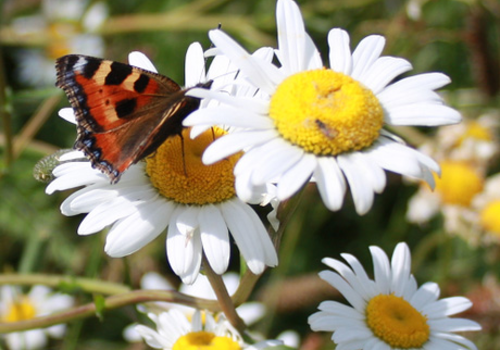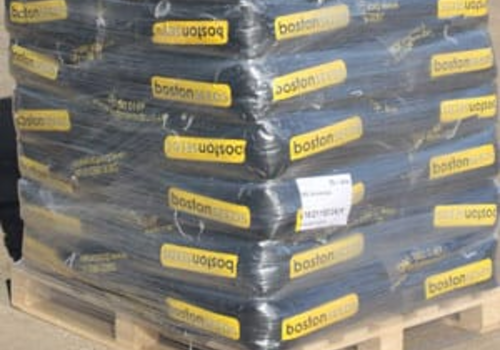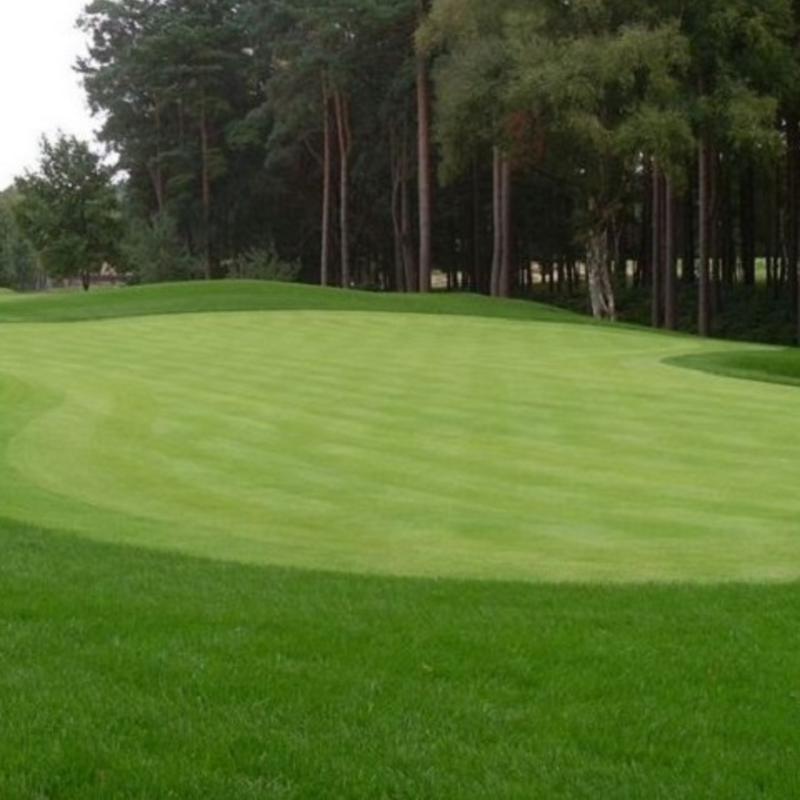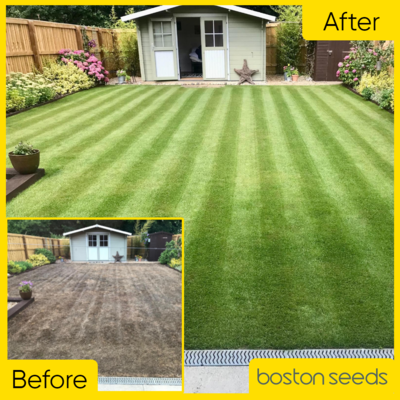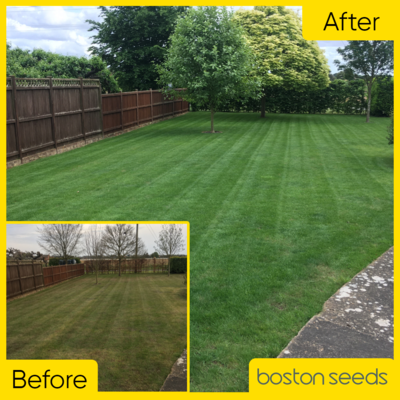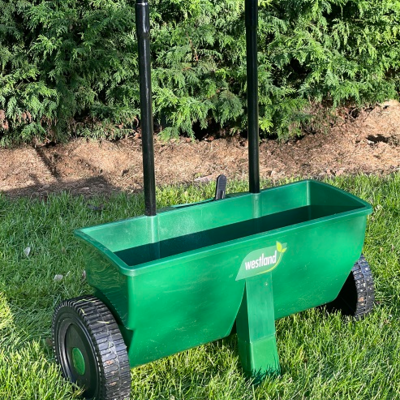BS Bowling & Putting Green Grass Seed
When only the best will do, our BS Bowling Green Grass Seed will create an exceptionally high-quality and fine-leaved lawn, certain to get the neighbours talking! This mix, designed originally for golf and bowling greens, will create a true garden showpiece to be proud of. For the lawn enthusiast only!
- Professional quality at a great value price.
- Contains only the very best grass varieties suitable for the highest-quality, fine-leaved and close mown lawn or putting green.
- Tolerates mowing down to 5mm and creates stunning stripes.
- Contains: 35% slender creeping red fescue, 60% chewings fescue, 5% common bent.
- DEFRA-certified for exceptionally high purity and germination.
- Sow at 25-35grams per sq/m - 20kg covers 575-800sq/m.
- For best results, use with Pre-Seeding Fertiliser and a spreader.
Sowing & Establishment
How to sow a new lawn
1 - Clear the area
Clear the area and remove any stones, weeds and other debris.
2 - Improve the soil
Cultivate the area to a depth of 15cm and remove any debris that is unearthed. For heavy clay soils, optionally, mix in sharp sand.
3 - Create a level seed bed
Level and rake over the area, then use a lawn roller to firm the soil.
4 - Allow the soil to settle
If possible, leave the soil for a week to allow a flush of weeds to come through; remove before sowing.
5 - Final ground preparation
Rake the area to loosen the top layer of soil. Apply our Pre-Seeding Lawn Fertiliser and rake into the soil.
6 - Sowing the grass seed
Sprinkle the grass seed evenly across the area at 50g/sqm. A spreader can be used for accurate application.
7 - Tread/roll the grass seeds in
Lightly roll or tread in the seeds to make contact with the soil. A harrow can be used for large areas.
8 - Water
If going through a period of drought, water the area every other evening for the first few weeks. If regular rainfall, manually watering will not be necessary.
9 - Mowing the lawn
Under optimum conditions, the seed should germinate within approximately 14-21 days. Once it reaches 3-4 inches, you can mow the area by half an inch each cut.
How to repair an existing lawn
1 - Prepare the grass
Cut the existing grass short and almost scalp the lawn with the lawn mower. Remove any dead grass, debris and thatch.
2 - Improve the soil
Scarify or rake the surface to loosen the top layer.
3 - Aerate the lawn
Optionally, to aid drainage, use a garden fork or aerator to create small holes around 1-2 inches deep.
4 - Sow the grass seed
Spread the grass seed evenly across the area at a minimum of 25g/sqm. A spreader can be used for accurate application.
5 - Tread/roll the grass seeds in
Lightly tread or roll in the seeds to make contact with the soil. A harrow can be used for large areas.
6 - Water
If going through a period of drought, water the area every other evening for the first couple of weeks. If regular rainfall, manual watering won’t be needed.
7 - Mowing the lawn
Under optimum conditions, the seed should germinate within approximately 14-21 days. Once it reaches a height of 3-4 inches, you can mow the area by half an inch each cut.
Maintenance
1 - Germination
The best time to sow our Bowling Lawn Seed is from March-October when the soil temperature is around 8-10 degrees Celsius. Under optimum conditions, the seed should germinate within 14-21 days from sowing.
2 - Watering
Grass seed requires warmth, moisture and light to germinate. Typically, Autumn will provide more favourable conditions for sowing in terms of moisture, however, if there is a period of drought, manually watering the seeds will be beneficial – this can be done every other evening to allow the moisture to soak into the soil.
3 - Mowing
Allow your lawn to grow to around 3-4 inches in height before it’s first cut, then this can be cut down by half an inch each time until you reach the desired height. It is important to remove the grass cuttings as the dead grass will prevent any sunlight from getting to the new grass. This mix is perfect for creating closely mown stripes if mown with a roller.
Our Bowling Green Grass Sed performs best when it’s kept closely mown and can be cut a couple of times per week during peak season. An established lawn sown can be cut as low as 5mm, but the average maintained height is around 5-10mm.
4 - Fertilisation
Regularly fertilising your lawn will provide it with the nutrients it requires to stay lush and green year-round. Don’t fertilise your lawn if the temperature is below freezing or the ground is frozen as the grass roots won’t be active so unable to take up the nutrients.
Once the lawn is over four months old, you can apply our quick release fertilisers. Around four applications a year, with a minimum of three months between applications will provide sufficient nutrients for an established lawn.
Post-season in the Spring, our Spring and Summer Lawn Fertiliser can be used to provide essential nutrients and help green up any areas coming out of the winter. After season in the Autumn and Winter, our Autumn and Winter Lawn Fertiliser can be applied so as to not stimulate too much growth into the cooler months, whilst promoting recovery.
5 - Scarifying, Aerating and Overseeding
A lawn mix that is 100% fescue requires regular ongoing maintenance to keep its appearance. Ongoing fertilisation, scarifying, removing any dead thatch and close mowing is essential in maintaining its appearance.
Both Autumn and Spring are good times of year to aerate and scarify your lawn and tackle any worn areas by overseeding. Aerating your lawn is optional, but particularly useful if you have heavier clay soils where waterlogging may be a problem. You can use an aerator or a garden fork to aid drainage. Scarifying is also beneficial in removing any dead grass, moss and thatch that may be hindering the growth of your existing grass.
You may find that after this process, there may be some bare patches amongst your lawn – this will be the perfect time to overseed when the soil temperature is optimum and moisture is plentiful. We do recommend overseeding with the same grass seed mixture as you have previously sown for a uniform appearance.
6 - Controlling Weeds
Unfortunately, as comes with seedbed preparation, weed seeds can lay dormant in the soil and it’s not until they are disturbed and the conditions are ideal, that they then can start to germinate.
If you do find that some weeds do come through during establishment, these will be taken out by regular mowing once the lawn has reached around 3-4 inches in height. If these weeds are recurring, after 4 months, a Selective Weedkiller can be applied which will kill common lawn weeds, whilst leaving the existing grass unharmed.
7 - Controlling Moss
Moss can become problematic in areas that are particularly damp and shady. Moss Killer is best applied during March-October when the Moss is active.
On a newly established area (under 5 months old), avoid using a moss killer as this will be too strong for the lawn. Instead, rake over the area to loosen and remove the moss; further seed may need to be applied in this area.
Once the lawn is established (over 5 months old), a moss killer can be applied such as our Lawn, Feed and Weed plus Moss Killer for light areas of moss, or our Lawn Revivor and Moss Destroyer for heavier infested areas. After using these, the moss will turn black within a couple of weeks, rake and remove this and overseed with one of our lawn seeds.
Buy With Confidence

